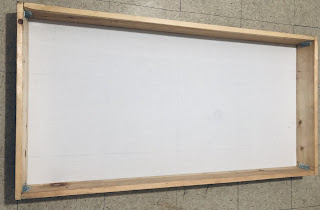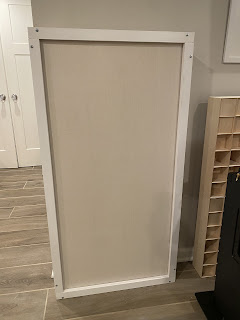 |
| Acoustic panel frame with muslin backing. |
I bought a box of Owens Corning 703 2” fiberglass boards a few years back, and had used it to make two 4” thick panels. The two remaining OC703 boards were sitting in storage, as my focus moved on to other DIY projects. I across some leftover 1x5 lumber recently, and pushed myself to use up the OC703.
The joints of the 25.5”x49.5”x4.5” frame were glued and reinforced with corner braces. I stapled bleached muslin fabric onto the frame. I may eventually attach an external frame of 1x1 lumber on the front to hide the staples for aesthetic purposes. It is not a high priority at the moment.
 |
| Panel with 4” of OC703 stuffed into frame. |
Edit - 10/18/22 - I had some extra white paint to use on the sides of the panel to make it more presentable. I ended up screwing 1”x2” pine strips onto the front face to hide the staples.
 |
| Completed 4” thick OC703 panel. |
Next, I am thinking of building 6” thick panels with Safe ‘n’ Sound, and soffit-style bass traps with fluffy insulation to improve my room’s acoustics.


